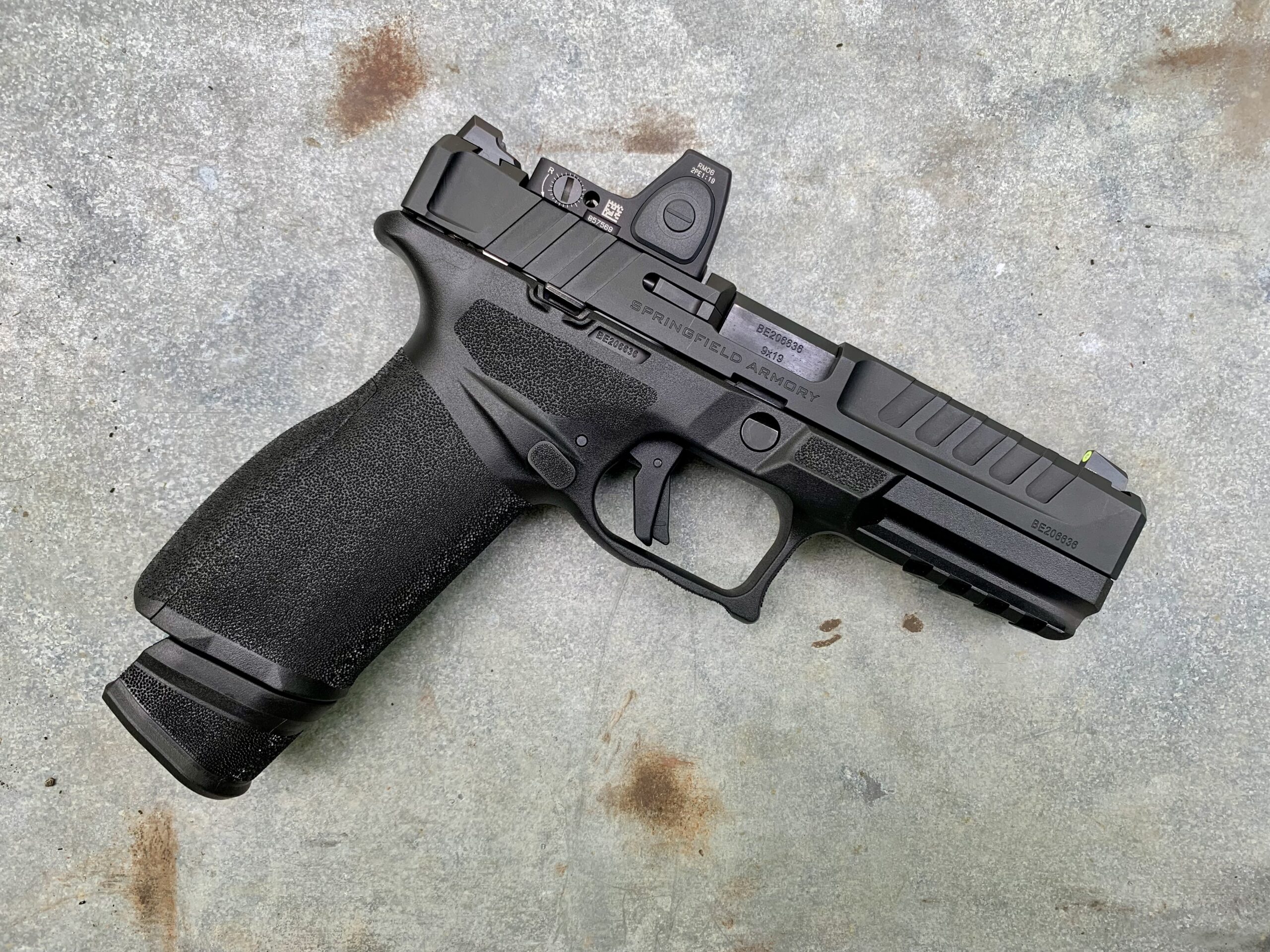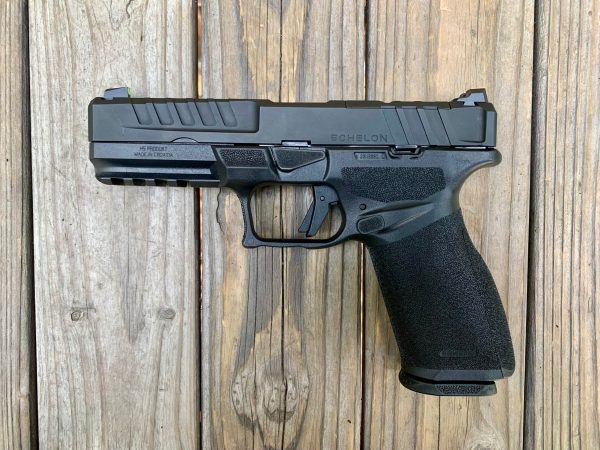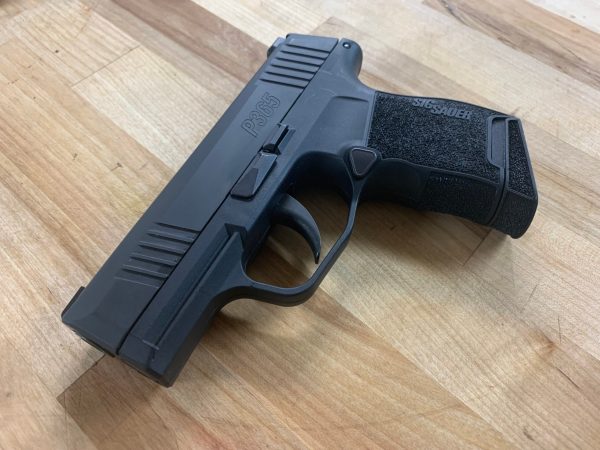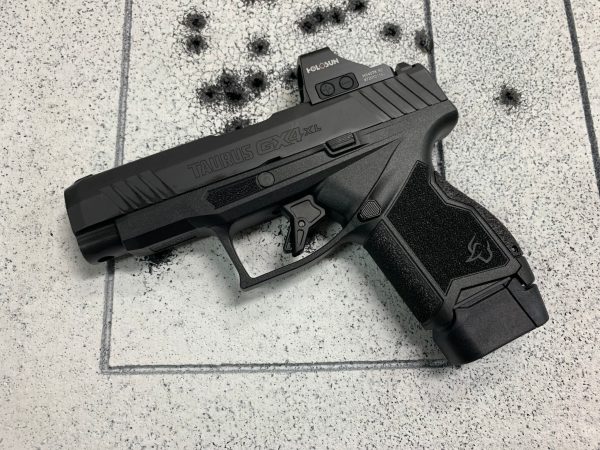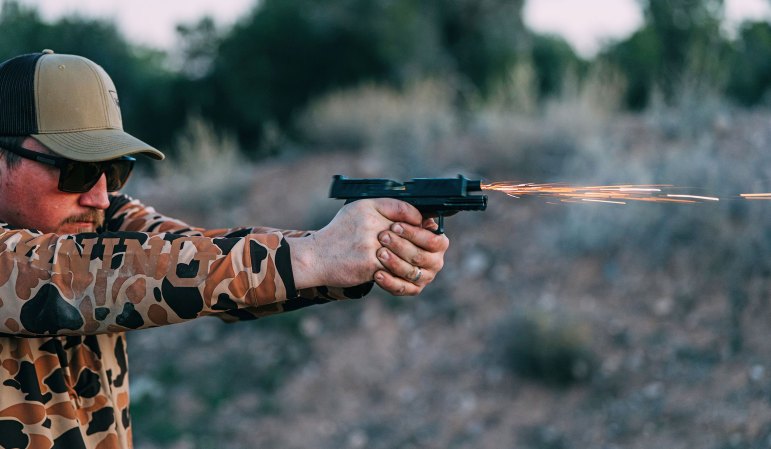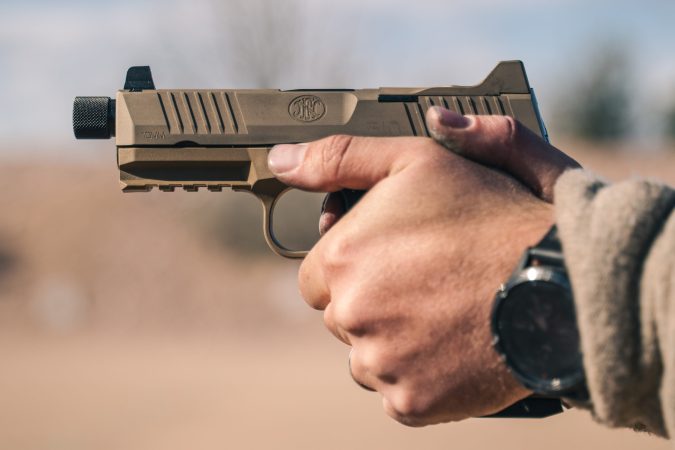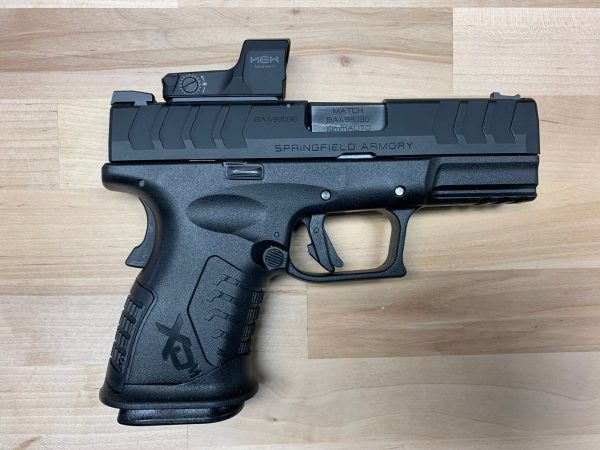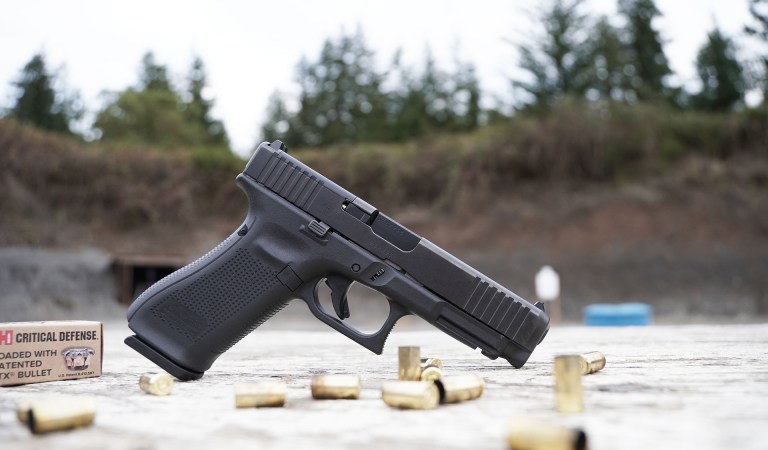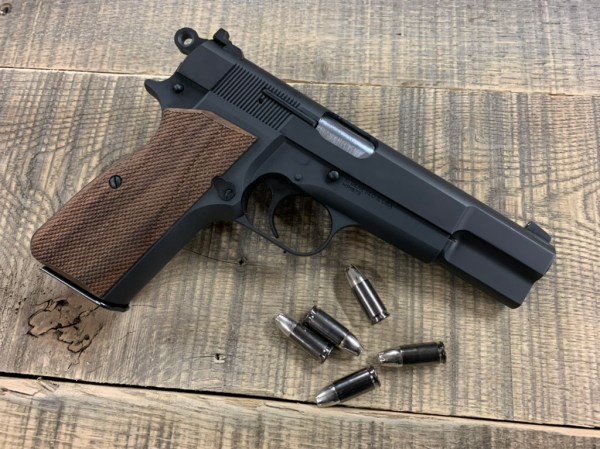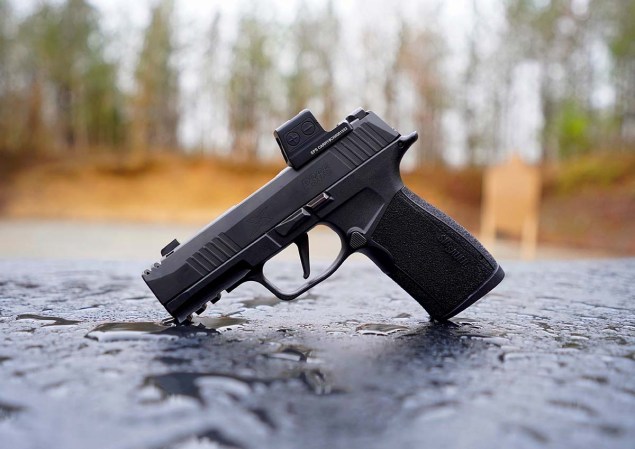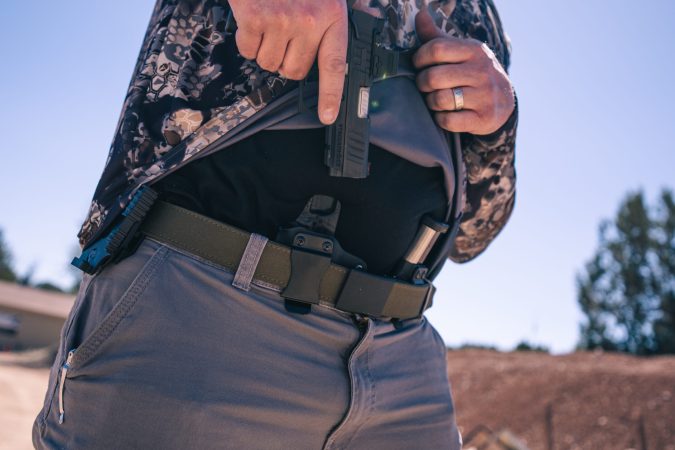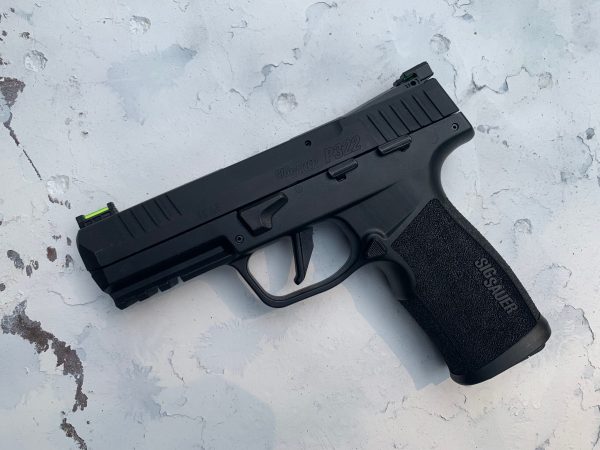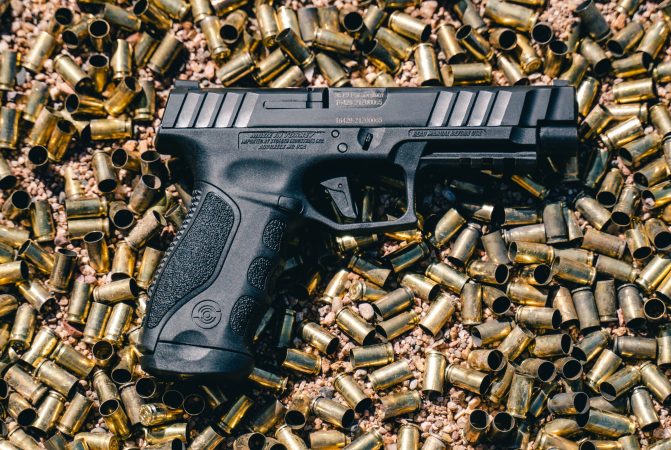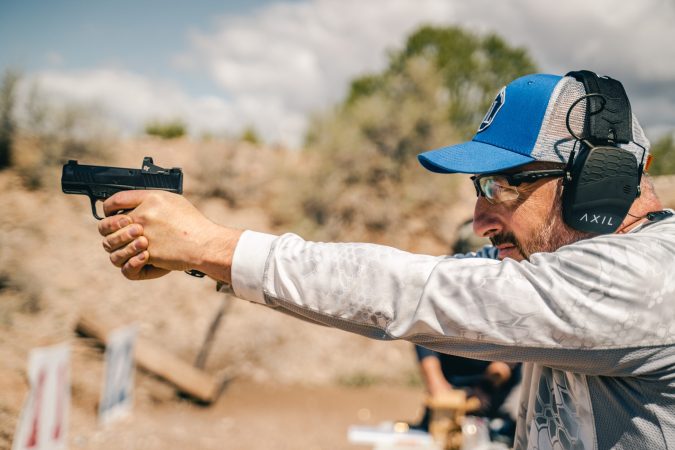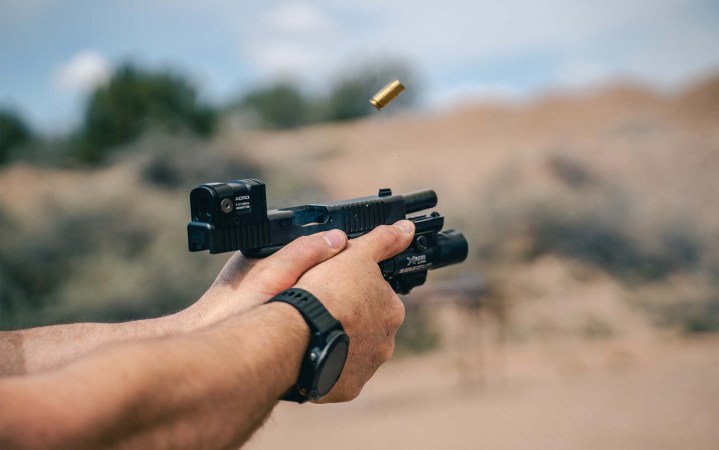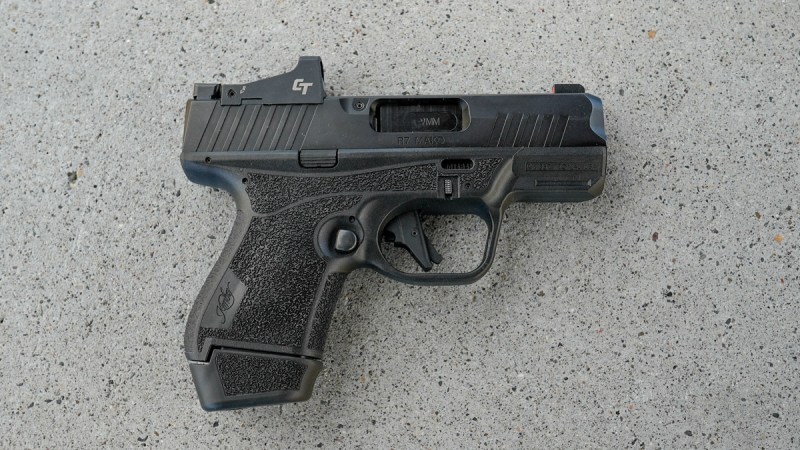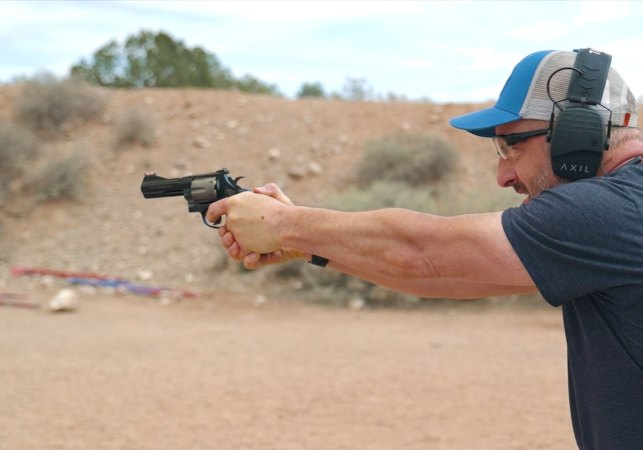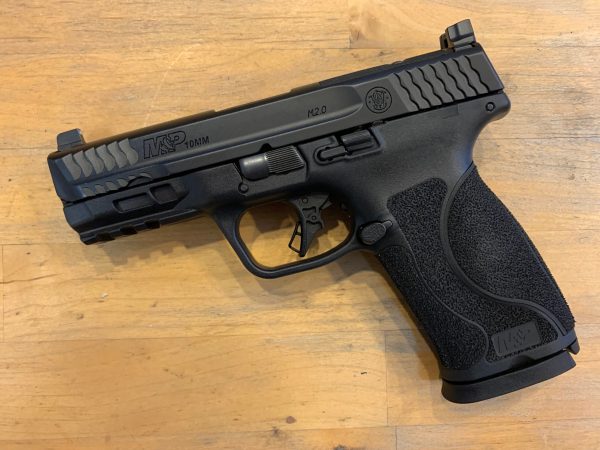We may earn revenue from the products available on this page and participate in affiliate programs. Learn More ›
The first pistol I purchased, at the age of 21, was one of the relatively new Croatian-made Springfield XDs. I used that pistol to dip my toes into the world of action pistol competition, and it served me well. The XD line has been reliable, popular, and enduring over the past couple decades, but hasn’t seen any drastic modifications. The all-new Springfield Armory Echelon is a pistol that changes that, aiming to fill the needs of the current generation. On the surface, it’s another polymer-framed pistol with modern-styled slide cuts and an optics mount, but it features some key departures from other Springfield pistol designs—with some promising optimizations. All the hype in the world is meaningless if a gun doesn’t live up to it, so I enthusiastically accepted a test sample before they were released. I put more than 600 rounds, and many types, of ammo through the Springfield Armory Echelon to tell you exactly what to expect.
Springfield Armory Echelon Specs
- Caliber: 9mm
- Magazine capacity: 17+1 (standard), 20+1 (extended)
- Dimensions: 5.5 in. (H) x 8 in. (L) x 1.2 in. (W)
- Weight: 29 ounces (with empty 17-round Magazine, no optic)
- Grip Module: Black polymer, stipple texture
- Slide: Billet steel, black melonite finish, optics-compatible
- Barrel: 4.5 in. hammer-forged steel, melonite finish,
- Sights: Tritium front, white “U-Notch” rear
- Optic: Compatible with numerous optic styles
- Trigger: 5 pounds, 7 ounces (tested)
- Safety: Trigger tab and striker block safety device
- Price: $679
What Makes the Springfield Armory Echelon Tick?
On the surface, the Springfield Armory Echelon is a sleek, full-size pistol that displays some ergonomic features many shooters like, such as a thin, undercut-style trigger guard and aggressive cocking serrations. But what makes this so different from the XD line, or similarly styled competitors? The Echelon’s design is weighted equally toward modularity and optic compatibility. That’s something that contemporary shooters value, and Springfield has accomplished with this pistol.
The Springfield Armory Echelon’s Removable Chassis
The most notable part of the Springfield Armory Echelon is the employment of a removable “central operating group.” The entire trigger group and serialized portion of the gun are contained in a stainless steel chassis that is easily removed from the grip module, or what we’d usually call the frame.
Read Next: The Best Handguns of 2023
This concept was most notably introduced by the Sig Sauer P320 line of pistols, and also used in the P365 series. We’ve also seen it in pistols like the Taurus GX4 and GX4XL. A system like this is easier to manufacture and modular, allowing for multiple end-user configurations. They are also easier to clean and maintain.
The Echelon’s central operating group looks similar to the fire control unit of the Sig P320, and both are secured at the front by the takedown pin. However, they are quite different beyond that. The Echelon employs both a trigger bar safety and a striker block safety mechanism to help prevent accidental discharge.
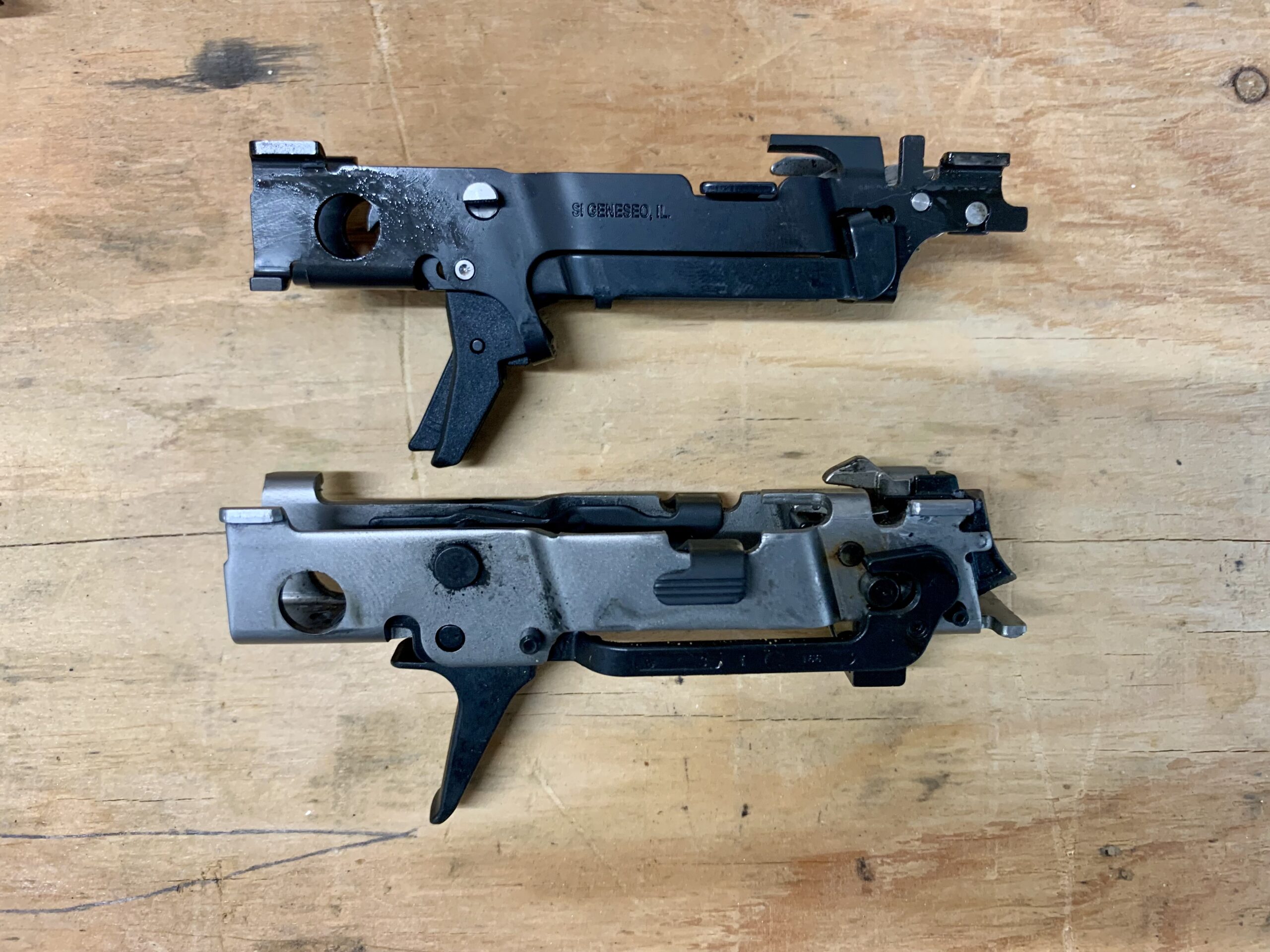
Modular, Low-Sitting Optics Mounting System
The other most significant feature of the Springfield Armory Echelon is its VIS optics mounting system, which stands for “variable interface system,” not the Polish-designed world-war-II-era VIS pistol. Although many of Springfield’s XD series of pistols are optic compatible, they have a shallow slide cut that uses adapter plates making it difficult to co-witness iron sights through the optic. A high-sitting optic also affects a pistol’s handling, making it slower and more awkward.
The VIS cut is deeper and designed to be compatible with a variety of pistol red dots without needing to use adapter plates. A pattern of holes and removable pins make the slide cut adaptable to a wide range of optic footprints. Mine came with a cover plate and pin sets for the Trijicon RMR, Leupold Delta Point Pro, and Shield RMSc.
I shot the Springfield Armory Echelon extensively with a Trijicon RMR and the optic sits unbelievably low. In fact, it took some getting used to compared with the higher-sitting optics I use on other pistols. This is partly due to the forward grip angle created by the backstrap, too. It’s similar to a Glock, requiring a forward-pitched wrist. It can be troublesome if you’re switching between pistols, but once I get into “Glock mode,” dot acquisition is fast. I found sight acquisition more natural with a Delta Point Pro, but it obscures the regular-height sights. The iron sights themselves present quickly when using without an optic.
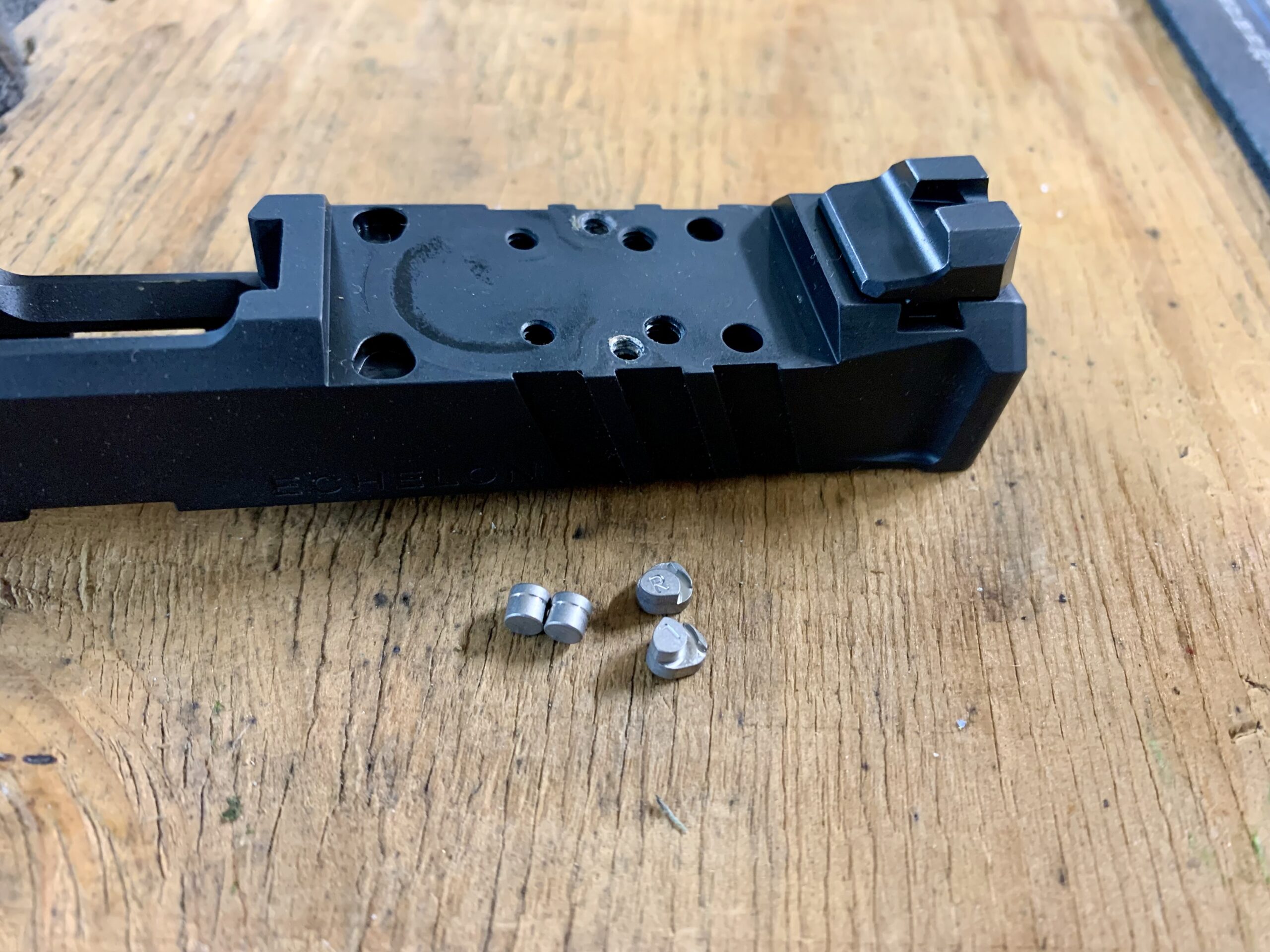
The Springfield Armory Echelon Grip Module
The grip module of the Springfield Armory Echelon earns high marks from me in ergonomics and handling. It’s essentially a polymer shell that the central operating group drops into, and has a four-slot accessory rail in front. The only moving part it houses is the stipple-textured, ambidextrous magazine release button.
The Echelon’s grip is streamlined and slender for a full-size double-stack pistol. The grip narrows slightly for the web of the hand, and a thin beavertail allows the shooter to cement their grip just below the bore axis. It has a fine-textured stipple finish, like what you’ll see on the Hellcat series of pistols. That surface treatment offers superb purchase for a sweaty palm. The magwell has a slight bevel for smooth loading.
The gun comes with three interchangeable backstraps of varying thickness, and each has a 2mm punch pin permanently installed into the top. The trigger guard has a thin bottom, typical of what a custom undercut trigger guard would look like, and it’s finished on the bottom and front with the same stipple texturing as other parts. The texture is also present on either side of the grip module, just forward of the takedown lever pin. Both sides of the module (and the tab on the takedown pin itself) are scalloped out to provide an indexing and traction-rich spot for the support hand thumb during two-handed shooting.
Upper Half of the Springfield Armory Echelon
Although the Springfield Armory Echelon has a slide that measures 1.1 inches at its widest point, which is slightly wider than my Glock Gen 3 G17, most of the slide has been slimmed down by removing excess material. The widest points of the Echelon’s slide are at the front and at the cocking tabs on the rear—everything between has been whittled to a skinnier profile. Most notably, the slide has been cut down deeply just forward of the ejection port, and wide, aggressive cocking serrations are milled further into the slide. This gives the pistol superb traction for front cocking or press checking but, because it’s all within the outside dimensions of the slide, it won’t hang up on a holster. It’s one of the coolest and most functional slide profiles I’ve seen on a production pistol.
The slide on my model features a green-dot tritium front sight and white, U-notch rear. Both sights are beveled, durable, and friction-fit into dovetails on the slide. A slender extractor with a large hook peels empty cases from the gun smartly.
The Echelon is initially offered with a flush-fitting 4.5-inch hammer forged barrel, but longer, threaded-muzzle barrels will be available. Models will be available with three-dot tritium sights rather than the white U-notch, and Springfield will be selling suppressor-height sights too.
The recoil system is simple—just a single captured flat spring on a polymer guide rod. The guide rod is ornamentally stipple textured on the front end, and has channels molded along its length. These channels should reduce the bearing surface with the spring. My first impulse is to ditch polymer guide rods faster than a bad date, and the rear surface that bears against the front of the locking lug is already showing some wear. It would likely be fine for thousands of rounds, but it’s something I’d swap at the earliest opportunity. At launch, Apex Tactical will have aftermarket guide rods in stainless and black Armorlube DLC finish available to order.
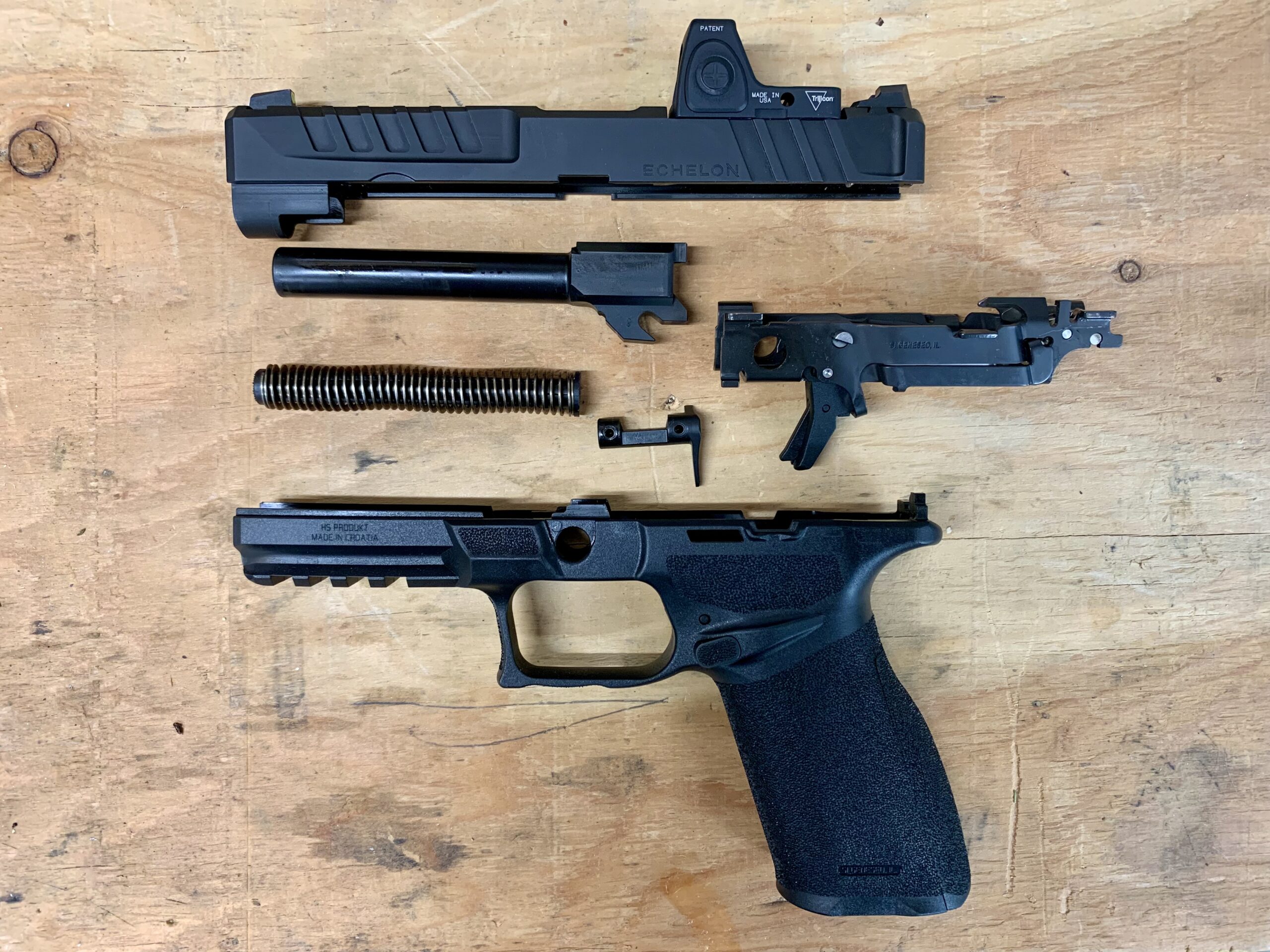
Magazines
In addition to the interchangeable backstraps, the Springfield Armory Echelon comes with two steel magazines. Both have 17-round witness holes in the back, but one comes with a short polymer extension that boosts its capacity to 20 rounds. The baseplate of the 17-round magazine fits tightly against the bottom of the grip, and the 20-rounder extends about an inch lower.
My Echelon also came with an additional extended baseplate to convert the 17-round magazine if desired. Usually aftermarket mag extensions require more powerful springs, but both magazine springs appear to be identical—and designed to function with the extended baseplates. With the 17-round base plate installed, the spring is discernibly stiffer. To load the magazines fully, it’s helpful to use the included mag loader.
Springfield Armory Echelon on the Range
I immediately noted a contrast between the Springfield Armory Echelon and the XD line of pistols. Sometimes the XDs get a bad rap from internet trolls who can’t actually elaborate on any real problems with the pistols. I’ve always found them to be very reliable, if a little clunky. In the hand, the Echelon feels slender and more like the smaller Hellcat than an XD. The high grip allowed by the beaver tail and undercut-style trigger guard help facilitate a wonderfully soft recoil impulse. In a striker-fired gun, I’m not sure I’ve shot a more easy handling, intuitively pointing, pleasant pistol.
I’m not a fan of the pistol’s trigger pull and reset though. The trigger shoe is fine. It’s not curved, but angles about 15 degrees forward just below the trigger safety bar pin. The lower two thirds of the trigger shoe form a flat surface when the trigger safety is depressed, and the trigger breaks when that surface is approximately perpendicular to the barrel. The pull isn’t terrible for a striker-fired gun, but it’s a bit inconsistent and doesn’t break crisply. Trigger pull weights varied by a few ounces each time I measured with my Lyman trigger-pull gauge. The reset is softer than I’d like, too. All said, it’s still within acceptable parameters for a striker-fired gun in my book.
I’m a fan of the positioning of the ambidextrous slide stop levers, but I think they could be better executed. They are within easy reach of the shooter’s thumb, but they’re small and a bit sharp. The pressure required to release the slide feels a little different when using the pistol left- versus right-handed. It’s difficult to manually lock the slide open without breaking my grip. More user-friendly levers would be an easy fix.
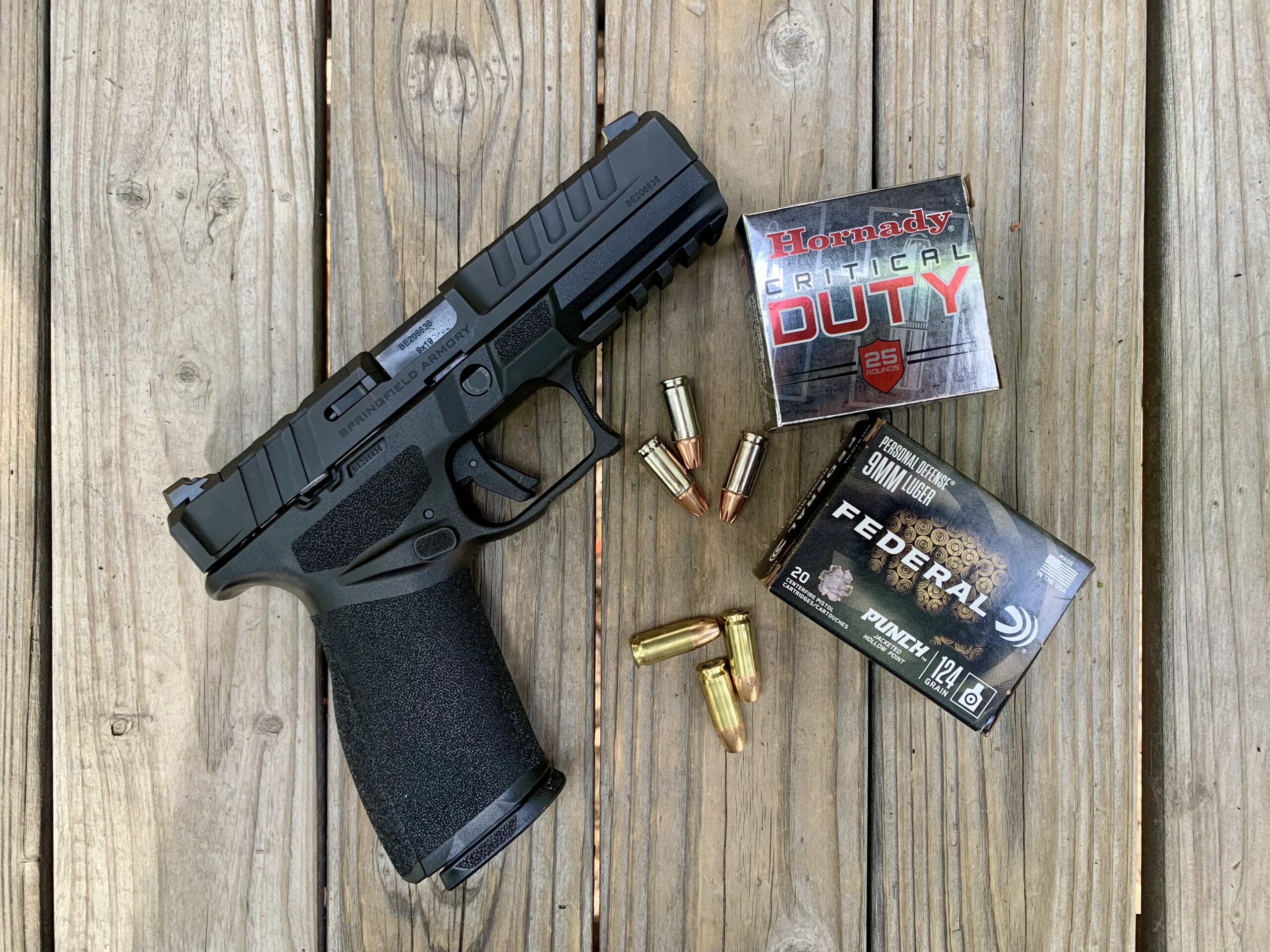
Accuracy
I found the Echelon’s accuracy to be completely satisfactory for defensive or duty purposes, and it was easy to shoot quickly while keeping shots on target. For some objective accuracy data, I fired 10 five-shot groups using four different types of defensive ammunition: Nosler 115-grain ASP JHP, Federal 124-grain Punch JHP, Hornady Critical Duty +P 135-grain FTX, and Federal Premium 147-grain Hydra-Shok. I fired each group using a bag on a tripod for support, following the same protocol we used at our 2023 gun test. The overall average group size was 1.77 inches, and the most accurate ammo was the Hornady 135-grain Critical Duty, which averaged 1.33 inches.
What the Springfield Armory Echelon Does Well
The Springfield Armory Echelon has excellent ergonomics and modularity, and sports the most versatile optics mounting system of any of Springfield’s pistols. It’s soft-shooting, the slide is easy to manipulate, and the fully ambidextrous controls are great.
Where the Springfield Armory Echelon Could Do Better
I’d like to see this pistol have a stainless or tungsten guide rod, more user-friendly slide stop levers, and a crisp trigger.
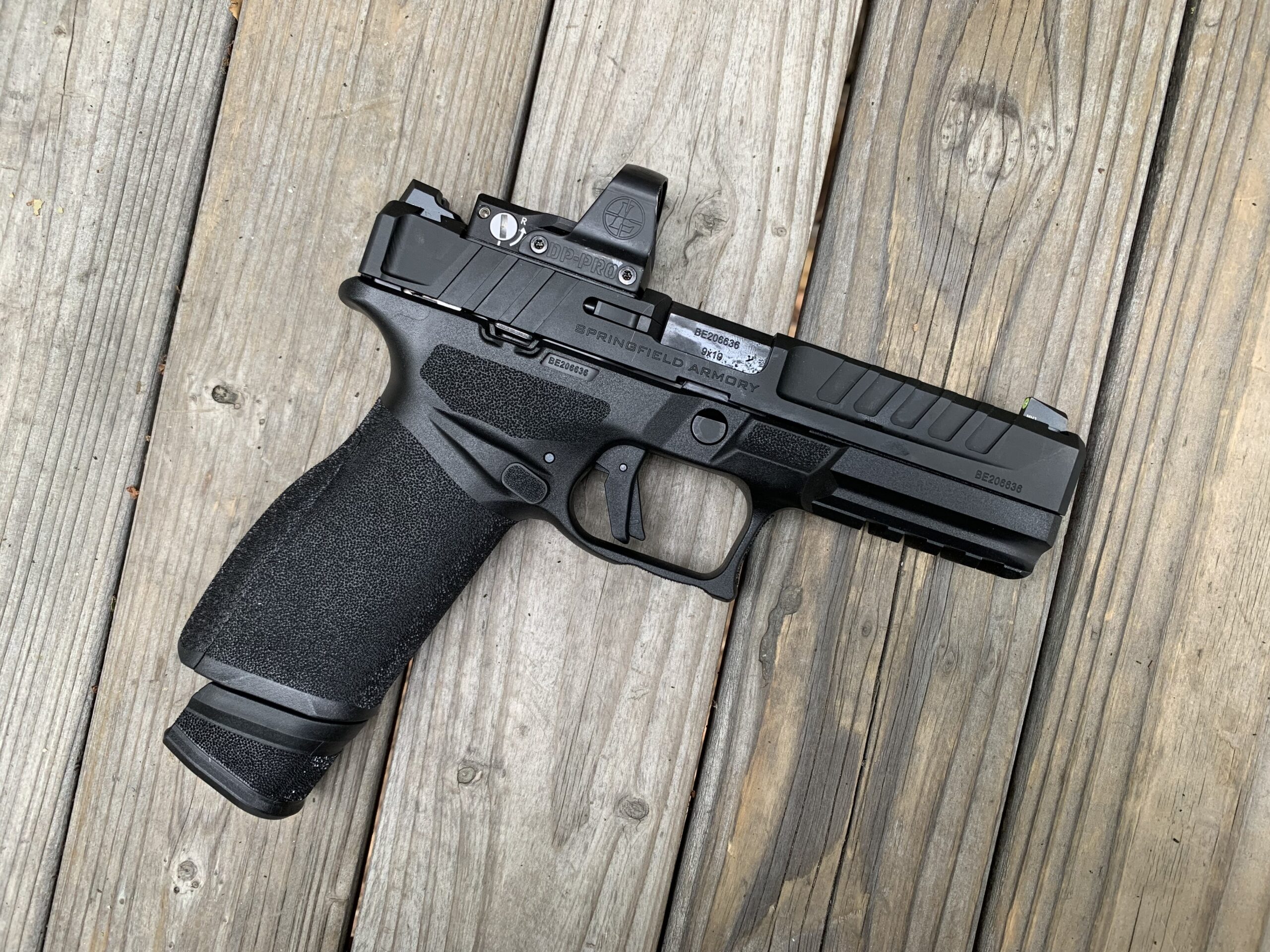
Final Thoughts
With so much focus on compact and micro compact 9mm pistols, it’s great to see several modern concepts folded into a full-size pistol like the Springfield Armory Echelon. The versatility of a removable central operating group and the opportunity for a variety of future grip module designs, the incorporation of a modular, no-plate optics mounting system, and the execution of such a soft-shooting pistol all set the Echelon up for success.

